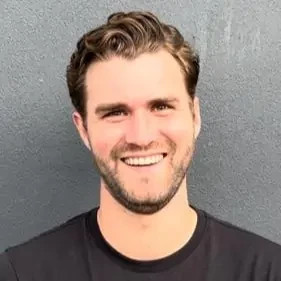Hi All, Is there any best practice on communicating the charts/exhibit to the interviewer? I am more interested in understanding the mechanics of communication e.g. do you communicate what you immediately see on the chart and then ask for time to come up with insights OR just ask for the time straightway then communicate your insights?
Charts / Exhibit Communications

Hi,
My advise is:
- First, understand the axis and elements of the chart - Before you jump into communicating initial observations about the chart, make sure you are reading it right (e.g. is axis sales or profit? does it refer to client or industry data, etc?) I've had interviewees who spend 2-3 minutes sharing insights on wrong data! If needed, clarify and ask questions.
- When you're clear on the parameters of the chart, ask for 1-2 minutes to think before communicating insights - this helps you (1) provide a structured answer to your interviewer and (2) think about the clear ‘so-what’ of the chart
- Finally, make sure you link your observations to the overarching case question - make sure you communicate how your observations help support/change your working recommendation. This will help create a natural conversation point to move case forward.
Hope this helps!

Hi there,
There's a method.
1. When you receive the chart from the interviewer read it. Don't interpret it, just read it.
2. Ask for time.
3. Note down your descriptive observations and the associated takeaways. Make sure that the ‘insights’ are actual insights. As in, they don't describe what's in the graph, but rather what are the implications of the numbers on the business situation of the client.
4. Group/Structure your notes and come up with the top 3 takeaways.
5. Get back to the interviewer and take them through the takeaways one by one.
6. Ask if they have any questions and whether they'd like you to dive deeper into any of the areas.
That's it :)

Hi there,
Step 1: Summarize the exhibit in your own words
Step 2: Ask for a moment to interpret…if you need it
Step 3: When you speak again, lead with the insights
Graph Interpretation Tips
1) Read the title - and understand it
2) Read the legends - and understand them
3) Remind yourself of the objective / hypothesis in the case, to see where this might fit
4) Find the differences - where does the line graph plummet or spike? Which column is a lot smaller or bigger than the others? Where does change occur? The differences are what matter
5) Talk outloud while interpreting - first, it helps you think and process your thoughts, second, it lets the interviewer provide guidance and course correct if needed.

Hi there,
The method I recommend for graph analysis is the following:
1. READ THE GRAPH
- Ask for 30 seconds to understand the graph
- Summarize the graph. Read in particular the graph title, the legend, and the footnote. Candidates quite often skip this part and then make mistakes
2. ANALYZE THE GRAPH AND FIND THE KEY INSIGHTS
- Repeat the question. Many candidates don’t spend time clarifying the question; consequently, they answer the wrong question. Be sure to align with the interviewer on what you have to do
- Provide an analysis related to the question. Identify the key insights of the graph based on the question. This is the most difficult part of graph analysis to master, as it is different in every graph. You can improve with drills on your own or coaching
3. PROPOSE THE NEXT STEPS
- State your hypothesis or suggestion on what to do next. Present what should be done next to help further the client to reach the goal
- Ask a question/propose an analysis related to what is needed to move forward. This will show you are able to drive the case forward
- - - - - - - - - - - - - - - - - - - - - - - - - - - - - - - - - - - - - - - - - - - - - - - - - - - - - - - - - - - - - - - - - - - -
You can find a few cases with Exhibits to practice below:
- NonProfit Case - www.case.tools/smart-education
- Consumer Goods Case - www.case.tools/blissottica
Best,
Francesco

This how you should approach exhibit reading:
- Read the slide by yourself (take your time, ask questions if you need to understand the slide)
- Consider the case objective when analyzing the slide (this is critical)
- Tell the impact of the slide in terms of the recommendation
- Explain the insights and support with the evidence from the slide.
Candidates usually do three mistakes:
- They just describe what the slide says (e.g. segment X is growing by 10%"). There's no “so what”, no insight".
- They bring up an insight… but it is unrelated to the problem you are trying to solve.
- They just don't know what to say.
In all of these situations the real problem is that they are not being objective or hypothesis driven. You have to analyze the exhibit in the context of the problem you are trying to solve.
So the first question you have to ask yourself is: how does this influence the case recommendation? (e.g. “should we invest in market XYZ”?)? Is this supporting evidence or not? Once you find it, you have an objective or hypothesis driven insight.
Then when you read the slide you say: this does (not) support entering market X, because of insights XYZ, which is based on ABC evidence".

A lot of good advice has been shared already. One thing it'd like to add is that you should always interpret the chart / exhibit in light of the overall objective / question at hand.
Focus on the “So What” based on that objective, and don't just interpret for interpretation sake.

Hello!
There are different styles for this.
In my case, for instance, I always prefer to get 30 secs to see for myself some key things:
What is being displayed?
What is the main message?
Once I have a rough idea, I start talking and walking the interviewer through it as I interiorize myself.
Cheers,
Clara

















